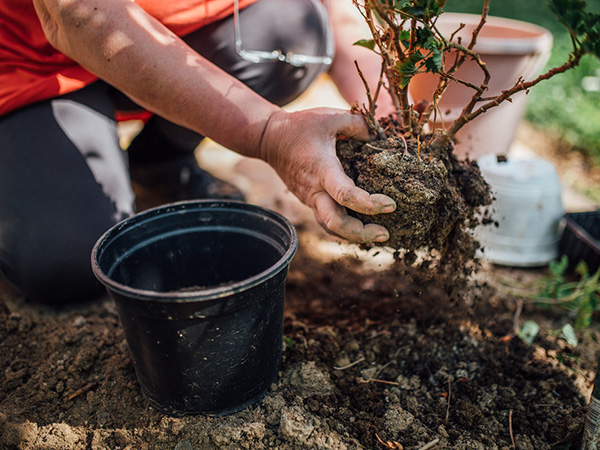Exploring the Green World: Essential Gardening Terms You Should Know
|
Apr 3, 2024 - By the dedicated team of editors and writers at Newsletter Station.

|
Gardening is a rewarding and enriching hobby that brings us closer to nature. Whether you're a seasoned gardener or just starting, understanding the language of gardening can significantly enhance your experience and success in nurturing plants.
To help you navigate this verdant world, we've compiled a list of essential gardening terms that will empower you to communicate fluently with fellow enthusiasts and deepen your understanding of this delightful pursuit.
- Perennials and Annuals:
Perennials live for over two years, often returning each spring after winter dormancy. Annuals, on the other hand, complete their life cycle in a single growing season. Knowing the differences between these two categories will help you plan your garden's layout and design.
- Mulch:
Mulch is a protective material layer, such as shredded leaves, straw, or wood chips, spread over the soil surface. It helps retain soil moisture, suppress weed growth, and regulate temperature.
- Compost:
Compost is decayed organic matter rich in nutrients and enhances soil structure. It's a valuable addition to any garden, as it improves soil fertility and helps plants grow healthy and strong.
- Pruning:
Pruning involves trimming or cutting back parts of a plant, such as branches or leaves, to promote healthy growth, shape the plant, and remove dead or diseased portions.
- pH Level:
The pH level measures the acidity or alkalinity of the soil. Different plants thrive in different pH ranges, so understanding your soil's pH can help you choose the right plants and amend the soil as needed.
- Transplanting:
Transplanting refers to moving a plant from one location to another. Proper technique is important to minimize shock and ensure the plant's successful establishment in its new home.
- Deadheading:
Deadheading involves removing faded or spent flowers from plants. This keeps the garden tidy, encourages more blooms, and prolongs the flowering period.
- Hardiness Zone:
Hardiness zones are geographic regions that indicate the average minimum winter temperatures. Knowing your hardiness zone helps you select plants suitable for your climate and withstand the local winter conditions.
- Fertilizer:
Fertilizers provide essential nutrients to plants, promoting healthy growth and development. They come in various forms, including organic and synthetic options.
- Sunlight Requirements:
Understanding a plant's sunlight requirements (full sun, partial sun, or shade) is crucial for proper placement in your garden. Placing sun-loving plants in the shade or vice versa can affect their growth and overall health.
- Watering Schedule:
Different plants have varying water needs. Some prefer consistently moist soil, while others thrive in drier conditions. Establishing a suitable watering schedule is essential for preventing both under and over-watering.
- Companion Planting:
Companion planting involves growing different plants together to benefit each other. Some plants repel pests, others enhance soil fertility, and some offer structural support—pairing them strategically can lead to a healthier garden ecosystem.
- Hybrid vs. Heirloom:
Hybrid plants are bred by crossing two varieties to achieve specific traits, such as disease resistance or improved yield. Heirloom plants are open-pollinated varieties passed down through generations, often cherished for their unique characteristics and histories.
- Soil Aeration:
Soil aeration involves improving the air exchange within the soil. This can be done through methods like tilling or tools to create small holes, which helps roots access oxygen and nutrients more effectively.
- Hardscape:
Hardscape refers to the non-plant elements in a garden, such as paths, patios, walls, and decorative features. Balancing hardscape and softscape (the plants) is key to creating an aesthetically pleasing garden design.
Gardening is a continuous learning journey, and familiarizing yourself with these terms is a significant step toward becoming a more knowledgeable and confident gardener. As you cultivate your green haven, these terms will empower you to make informed decisions, troubleshoot challenges, and fully appreciate the intricate dance between plants, soil, and the elements.
So, don your gardening gloves, grab your trowel, and embark on a journey of growth, beauty, and connection to the natural world.
Unlock the Power of Email Marketing
Harness the potential of email marketing with Newsletter Station. Reach your target audience, drive conversions, and achieve your business goals.
|
More Blogs
| Apr 24, 2024 |
Maximizing Harvests and Soil Health: A Guide to Crop Rotations in Your Home Garden
|
| Apr 17, 2024 |
10 Creative Garden Edging Ideas to Elevate Your Landscape
|
| Apr 10, 2024 |
How to Ensure Your Garden Survives During Your Vacation
|
| Apr 3, 2024 |
Exploring the Green World: Essential Gardening Terms You Should Know
|
| Mar 27, 2024 |
How to Design a Front Entry Garden: Welcoming Beauty at Your Doorstep
|
| Mar 20, 2024 |
Make a Wood Pallet Garden: A Green Thumb's Guide
|
| Mar 13, 2024 |
Seeds or Seedlings? Get Your Garden Started
|
| Mar 6, 2024 |
How to Till a Garden: A Step-by-Step Guide to Cultivate Your Green Haven
|
| Feb 28, 2024 |
Perennial Vegetables to Plant for Years of Produce
|
| Feb 21, 2024 |
The Green Thumb's Guide to In-Garden Composting: Techniques and Tips
|
| Feb 14, 2024 |
Enhancing Your Garden with Straw Mulch: A Comprehensive Guide
|
| Feb 7, 2024 |
Traps Aren't Always the Answer for Furry Pests
|
|
|
|